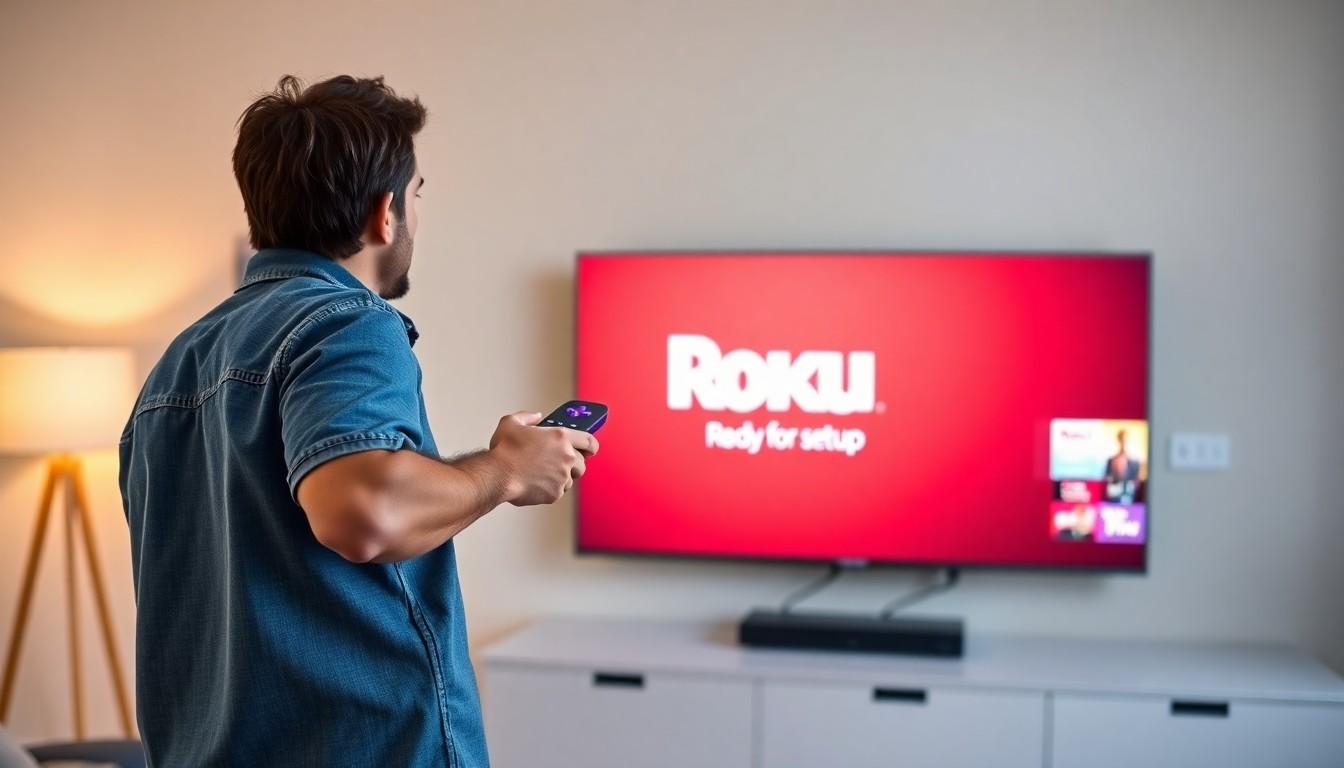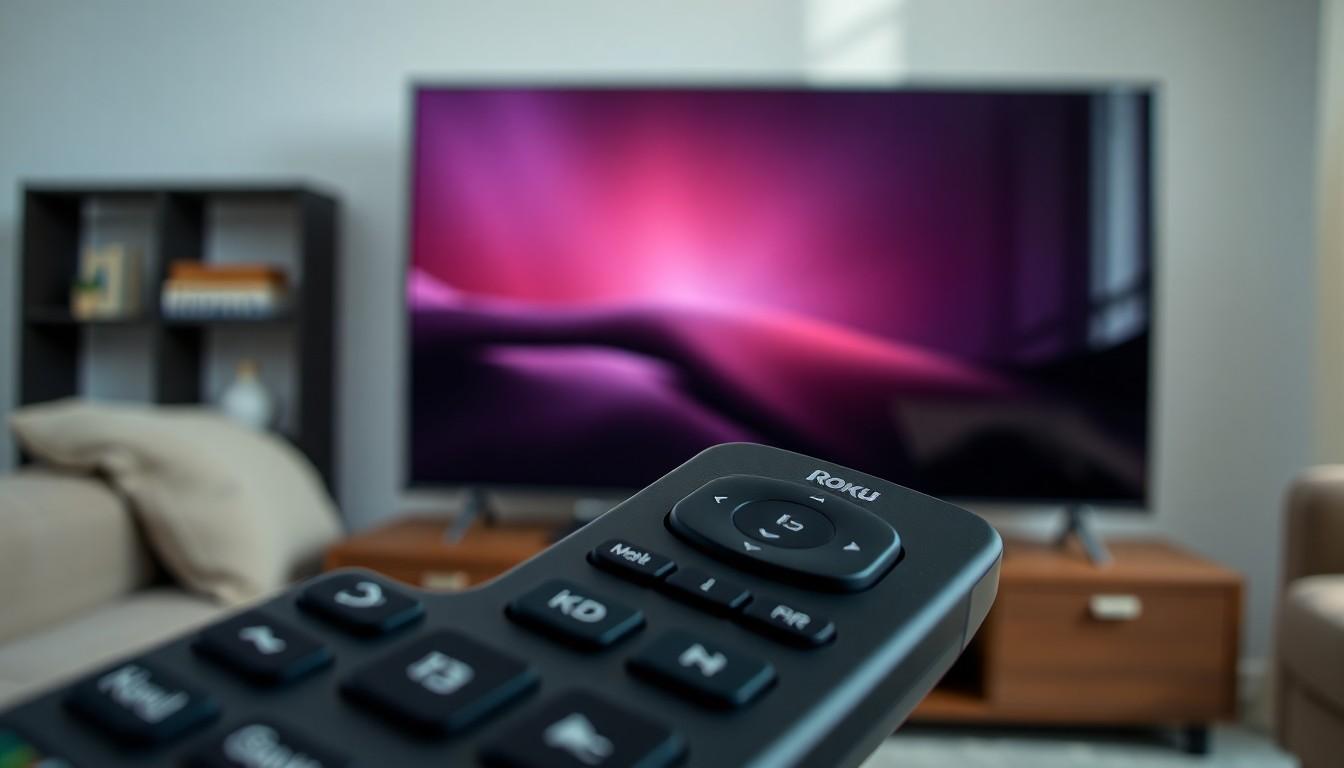Programming a Roku remote to control a TV can transform the way viewers enjoy their favorite shows and movies. With just a few simple steps, users can streamline their entertainment experience, eliminating the need for multiple remotes cluttering the living room. This seamless integration not only enhances convenience but also adds a touch of modernity to home entertainment setups.
Many people may not realize how easy it is to sync their Roku remote with their TV. Whether it’s a brand-new smart TV or an older model, the process is designed to be user-friendly. By following straightforward instructions, anyone can unlock the full potential of their Roku device, making it easier than ever to navigate through streaming services and access content with a single remote.
Programming Roku Remote To TV
A Roku remote facilitates easy navigation of streaming services and enhances the overall viewing experience. Various types of Roku remotes come with distinct features to accommodate different user needs.
Types of Roku Remotes
- Standard Roku Remote: Commonly included with most Roku devices, it features basic controls for navigation and playback.
- Roku Enhanced Remote: Offers voice control, a headphone jack, and four customizable shortcut buttons for quicker access to favorite channels.
- Roku Mobile App: Functions as a remote through a smartphone, providing additional features like voice commands, keyboard entry, and casting content directly to the TV.
Features of Roku Remote
- Easy Navigation: Simple layout allows quick access to channels, settings, and shows.
- Voice Control: Enhanced models enable voice search, making it easy to find content without scrolling.
- Streaming Shortcuts: Built-in buttons for popular streaming services streamline access to desired content.
- Headphone Jack: Some remotes include a headphone jack for private listening during late-night viewing.
Preparing for Programming


Preparing to program a Roku remote to a TV involves gathering essential equipment and ensuring compatibility. Following these steps eases the setup process and enhances user experience.
Necessary Equipment
- Roku Remote: Use either the standard or enhanced Roku remote.
- Television: Ensure the TV model is on the compatibility list.
- Power Source: Check that the TV is plugged in and turned on.
- Internet Connection: Stable internet connection aids in setup and software updates.
Checking TV Compatibility
Check the TV model against the Roku compatibility list. Supported brands include LG, Samsung, Sony, Vizio, and others. Newer TVs often come with HDMI-CEC technology which simplifies the programming process. Confirming compatibility ensures proper remote functionality and avoids setup issues.
Step-by-Step Guide to Programming Roku Remote to TV
Programming a Roku remote to control a TV streamlines the viewing experience. Follow these steps to ensure proper connectivity and configuration.
Connecting Roku Remote to TV
- Prepare Setup: Ensure the Roku device is connected to the TV through an HDMI port and powered on.
- Power On TV: Turn on the TV with its original remote control.
- Access Roku Home: Using the Roku remote, press the Home button to access the main menu.
- Navigate to Settings: Select “Settings” from the menu, then scroll to “Remote & Devices.”
- Select Remote: Choose “Pair Remote,” then follow on-screen prompts. The Roku remote automatically enters pairing mode.
- Follow Instructions: During the pairing process, ensure the Roku remote is aimed at the TV while keeping it within two feet of the device.
- Complete Pairing: Wait for confirmation on the screen indicating successful pairing.
Configuring TV Settings
- Access TV Menu: Using the original TV remote, go to the settings menu.
- Locate Remote Settings: Find options like “Remote Control” or “External Devices” in the setup menu.
- Enable HDMI-CEC: If the TV supports HDMI-CEC, enable this feature to enhance compatibility with the Roku remote.
- Select Control Method: Choose the preferred control method for external devices, such as “Roku” or “Smart Remote Control.”
- Test Functionality: After configuring settings, test the Roku remote by adjusting volume and changing channels to confirm control over the TV.
- Adjust Settings as Needed: Modify any additional settings for optimal integration, such as adjusting audio or display settings.
Troubleshooting Tips
Users may encounter various issues when programming a Roku remote to a TV. Understanding common problems and their solutions can help ensure a smooth setup process.
Common Issues During Programming
- Remote Not Pairing: Sometimes the Roku remote doesn’t pair with the TV. This issue often arises from being out of range or not aiming the remote directly at the TV during setup.
- Unresponsive TV Controls: Occasional unresponsiveness may occur. Users should verify if the TV model supports Roku control and check for any potential connectivity issues.
- Incorrect TV Model: Users might select an incompatible TV model. Refer to the Roku compatibility list to confirm that the TV brand and model support HDMI-CEC or specific Roku control features.
- Insufficient Power: Low batteries in the remote could lead to connection problems. Ensuring the remote has fresh batteries can resolve pairing issues quickly.
- Interference from Other Devices: Electronic interference from other devices might disrupt signals. Users can reposition devices or remove obstacles near the TV and remote.
Solutions to Connection Problems
- Reset the Remote: Users can reset the Roku remote by removing the batteries for 10 seconds and reinserting them. This method sometimes resolves minor pairing issues.
- Reboot the TV: Restarting the TV can help refresh the connection. Turn off the TV, unplug it for 30 seconds, plug it back in, and power it on.
- Recheck HDMI-CEC Settings: Ensure that HDMI-CEC is enabled on the TV. Consult the TV’s user manual for specific instructions on how to enable this feature.
- Reconnect the Roku Device: Users can try disconnecting the Roku device from the TV, reconnect it, and reinitiate the pairing process to resolve connectivity problems.
- Update Software: Checking for updates on both the Roku device and the TV is essential. Keeping software current can fix bugs and improve compatibility.
By recognizing these common issues and applying the provided solutions, users can effectively troubleshoot their Roku remote programming experience.